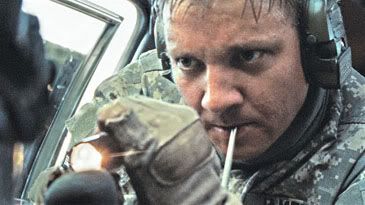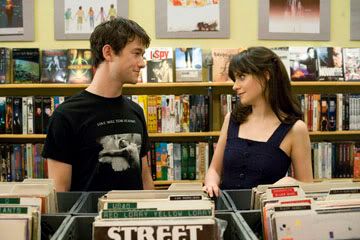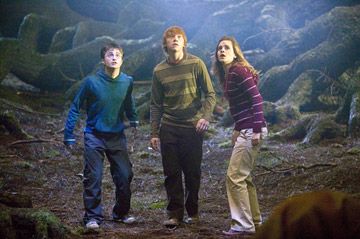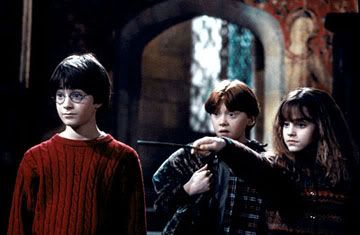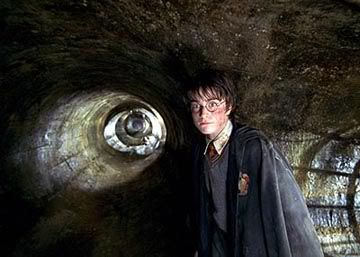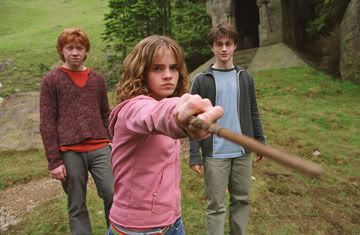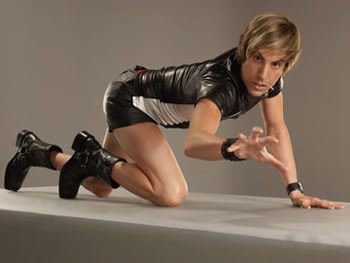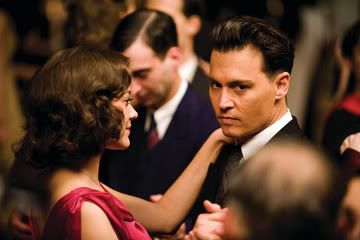
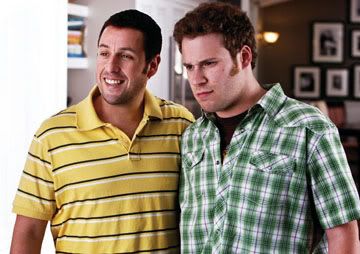
Although his name has been associated with many other great and not-so-great comedies, "Funny People" is the third film to be written and directed by Judd Apatow. Keep in mind, though, that this latest feature of his is certainly no "The 40-Year-Old Virgin" or "Knocked Up." He has departed from that adolescent raunchiness and has delved into the realm of something more dramatic. This is Apatow's most mature work yet, a very personal movie for him where he presents his own perspective on mortality, fame, life choices, and how comedy intersperses with it all. The real kicker is that underneath the surface of the ones who are meant to make us laugh there is anguish and bitterness, which is exactly what Apatow sets out to explore in this movie.
Ira Wright (Seth Rogen) is a struggling comedian who writes some good material for his stand-up act, and one night gets noticed by George Simmons (Adam Sandler), a comedian superstar. The star insists that Ira become his personal assistant and start writing material for him. And then George starts confiding in Ira, letting him on the inside, having him talk him to sleep, and then reveals to him that he only has a short time left to live. Seth Rogen, although Apatow won't openly admit it, is basically playing a young version of the director in the early days of his career. He plays Ira with sincere subtlety, and with a newly slimmed-down look (which the movie cleverly pokes fun at), he presents new dimensions we've yet to see him display.
And yet under the prowess of Adam Sandler, Rogen seems like a lost puppy. It is Sandler who steals the show proving yet again there's more to his acting with nuanced work that ranks among his oddball persona from "Punch-Drunk Love." As George, he taps into the anger and resentment that lies within him and brings it to the forefront with great results. George represents the burdens of the celebrity world as he accepts why he had to remove himself from other people. He has private jets, all the women he can get, a massive house, and an exuberant amount of material possessions, and yet he's isolated from everyone; the friends he has don't treat him like a real person. He's not only forced to struggle with his illness but also with the hermetically-sealed world of fame along with the illness. This is Sandler's best performance to date.
The movie provides an insider glimpse into the world of comedians and how they think and work. When they pitch ideas to one another, they never laugh at the jokes but rather just respond with, "That's funny." The stand-up sequences are really the core of the movie as Apatow shows us what's bad, what works, and what kind of material has potential. The unique thing about the humor in this movie is that we're laughing at things funny people are saying who already know that it's funny, and in that respect, the movie is overtly self-aware. It also slyly satirizes TV shows and formula comedies as Ira's roommates, Leo (Jonah Hill) and Mark (Jason Schwartzman, who also did the music), are both in a painfully bad sitcom called "Yo, Teach." Hill and Schwartzman play the competitive friends role perfectly. George's house is also filled with posters of his past movies such as "Mer-Man" and "My Best Friend is a Robot," in which George supposedly co-starred with Elizabeth Banks and Owen Wilson, respectively. There's also a moment where George discusses his shallow relationship with fellow celebrities, which leads to a hilarious sequence with Eminem and Ray Romano. As is the trademark with Apatow, the humor remains refreshingly current, and this time around, there are an impressive number of cameos, too.
But then comes the film's biggest drawback, and that's the girl who got away from George, Laura (Leslie Mann, as sweet as ever). An unnecessarily large portion of the second half of the movie spends time focusing on George's attempts at getting her back into his life. The problem is that she has a brute of an Aussie husband (Eric Bana showing some comedic flair) and a family of two daughters (adorably played by Apatow's real-life children). Here the movie drags and feels overlong, which emphasizes other portions of the movie that could've been trimmed. 146 minutes is a lot, especially for a comedy, and it gives the feel of something that is unfinished and unpolished. Although the length prevents things from ever getting formulaic, it also tends to ramble. As Apatow takes the risk of sending his work into a new direction, it definitely gets shaky and uneven at times. As much as the movie is about the maturation of Ira and George, it really is, at the heart of it all, about the maturation of Apatow as an affirmed talent.


